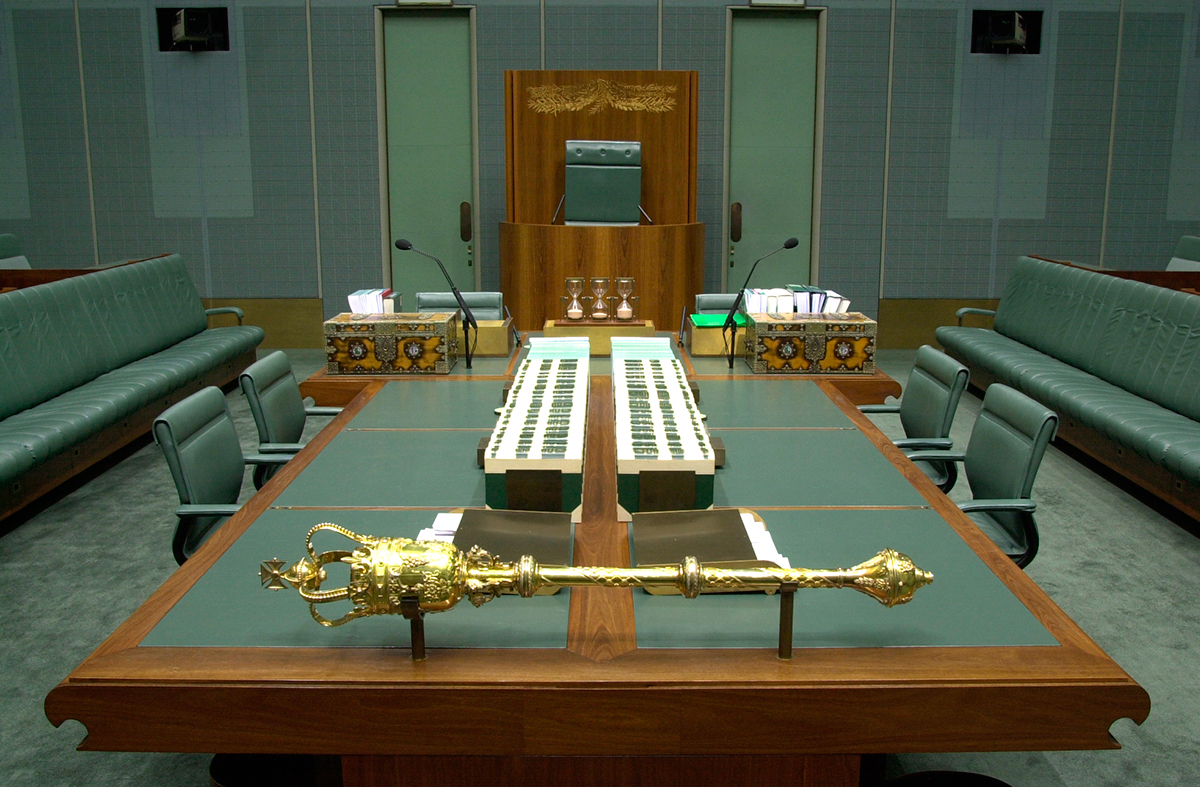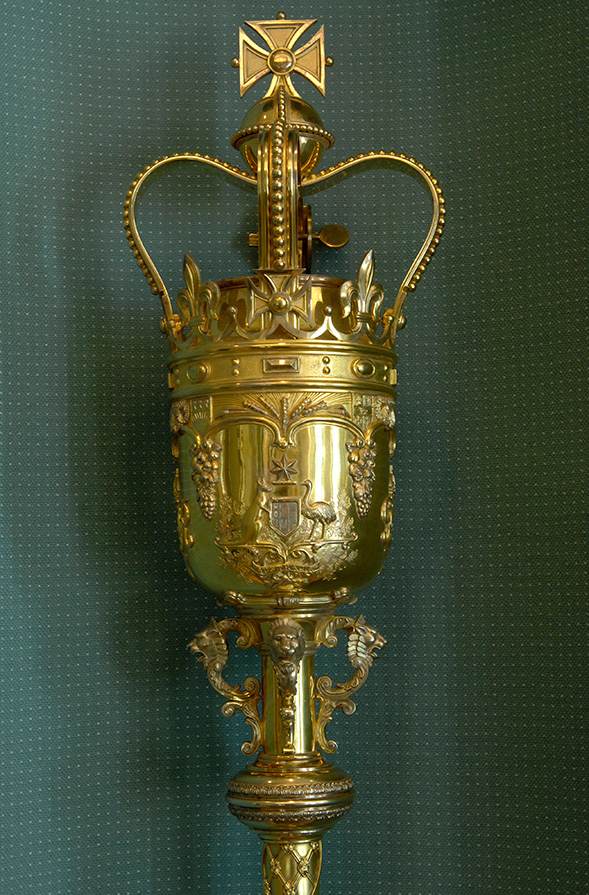Mace
The Mace is the symbol of the House of the Representatives. This fact sheet includes information about its function, design and history.
What will I learn?
- The Mace is the symbol of the power of the House of Representatives and the Speaker of the House.
- The Mace stays in the House of Representatives while it meets.
The Mace in the House of Representatives

DPS Auspic
Description
The Mace is a gold-coated ceremonial object. It is positioned on brackets at the end of the large table in the middle of the House of Representatives. The larger end has a royal crown. The crown on the Mace points to where the government sit.
Copyright information
Permission should be sought from DPS AUSPIC for third-party or commercial uses of this image. To contact DPS AUSPIC email: auspic@aph.gov.au or phone: 02 6277 3342.
What is the Mace?
The Mace is the symbol of the power of the House of Representatives and the Speaker of the House of Representatives. At the start of each sitting day, the Mace is carried into the House by the Serjeant-at-Arms and placed on the central table. The crown of the Mace always points to the government and the Australian Coat of Arms faces up. The Mace stays on the table while the House is meeting. When the House is not meeting, the Mace is stored in the Speaker’s Office.
The Mace accompanies the Speaker during formal occasions. Traditionally the Mace does not enter the Senate. At the opening of Parliament, the Mace sits outside the Senate covered by a cloth as the Governor-General gives the opening speech.
Detail of the Mace

DPS Auspic
Description
A close-up of the gold-coated Mace used in the House of Representatives. The head of the Mace has the royal crown and the Australian Coat-of-Arms. There are also designs of wheat and fruit reflecting Australia’s agricultural industry, and other decorative designs.
Copyright information
Permission should be sought from DPS AUSPIC for third-party or commercial uses of this image. To contact DPS AUSPIC email: auspic@aph.gov.au or phone: 02 6277 3342.
Detail of the Mace

DPS Auspic
Description
A close-up of the gold-coated Mace used in the House of Representatives. The head of the Mace has the royal crown and the Australian Coat-of-Arms. There are also designs of wheat and fruit reflecting Australia’s agricultural industry, and other decorative designs.
Copyright information
Permission should be sought from DPS AUSPIC for third-party or commercial uses of this image. To contact DPS AUSPIC email: auspic@aph.gov.au or phone: 02 6277 3342.
Design
The Mace was a gift to the Australian Parliament by the British House of Commons and King George VI in 1951. It celebrated the jubilee year—50th anniversary—of federation. It was made in London to look like the Mace used in the British House of Commons.
Some features of the Mace are;
- It is made of solid silver with gold plating and weighs approximately 8 kilograms.
- The larger end has a royal crown, the Australian Coat of Arms, the royal cipher—a monogram with King George VI’s initials—and emblems of the 6 Australian States.
- Designs of wheat and fruit reflect Australia’s agricultural industry.
History
The tradition of the Mace in the House of Representatives comes from the British House of Commons. From the 11th century in England, royal Serjeants-at-Arms were officers who remained close to the King or Queen. The royal Serjeant-at-Arms carried a mace stamped with the Royal Arms, which gave them the authority to arrest a person without a written warrant in the monarch’s name. By 1415, the House of Commons had appointed its own Serjeant-at-Arms to serve the members of the House.